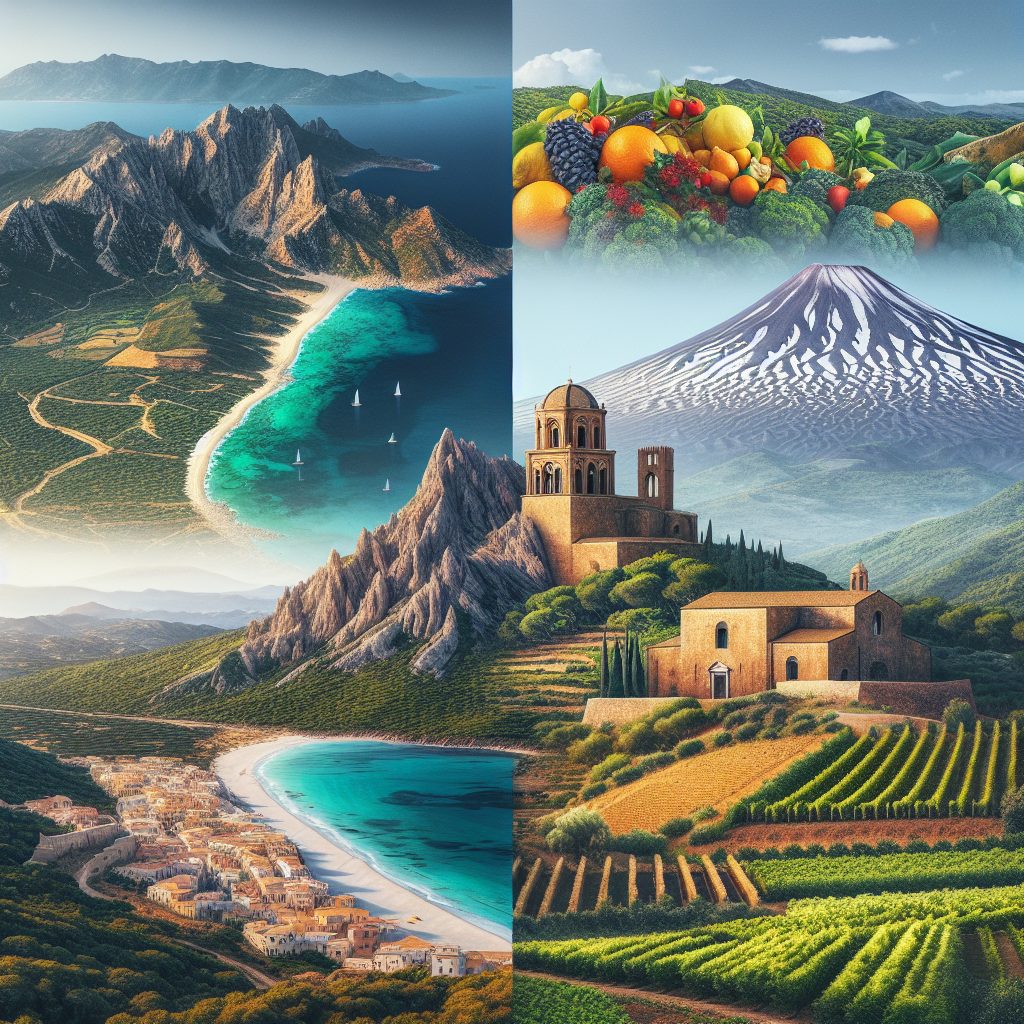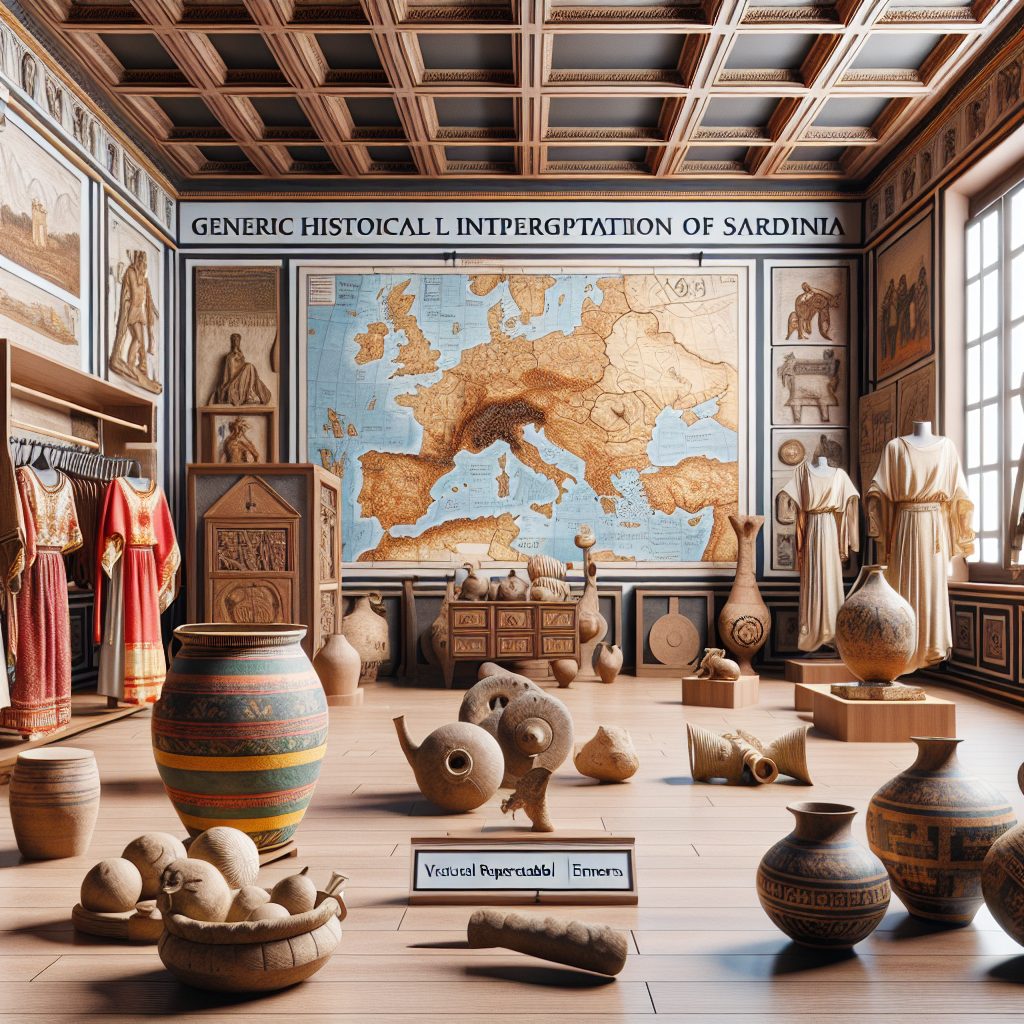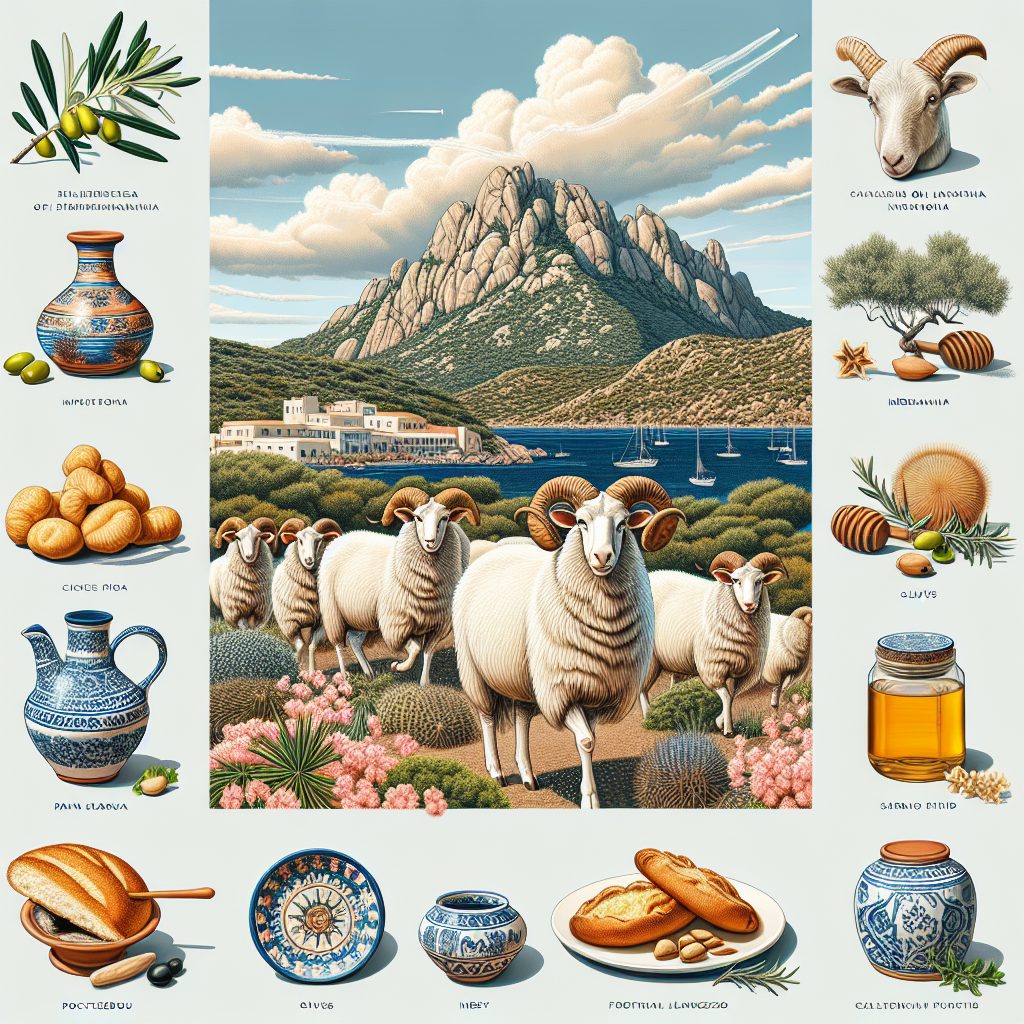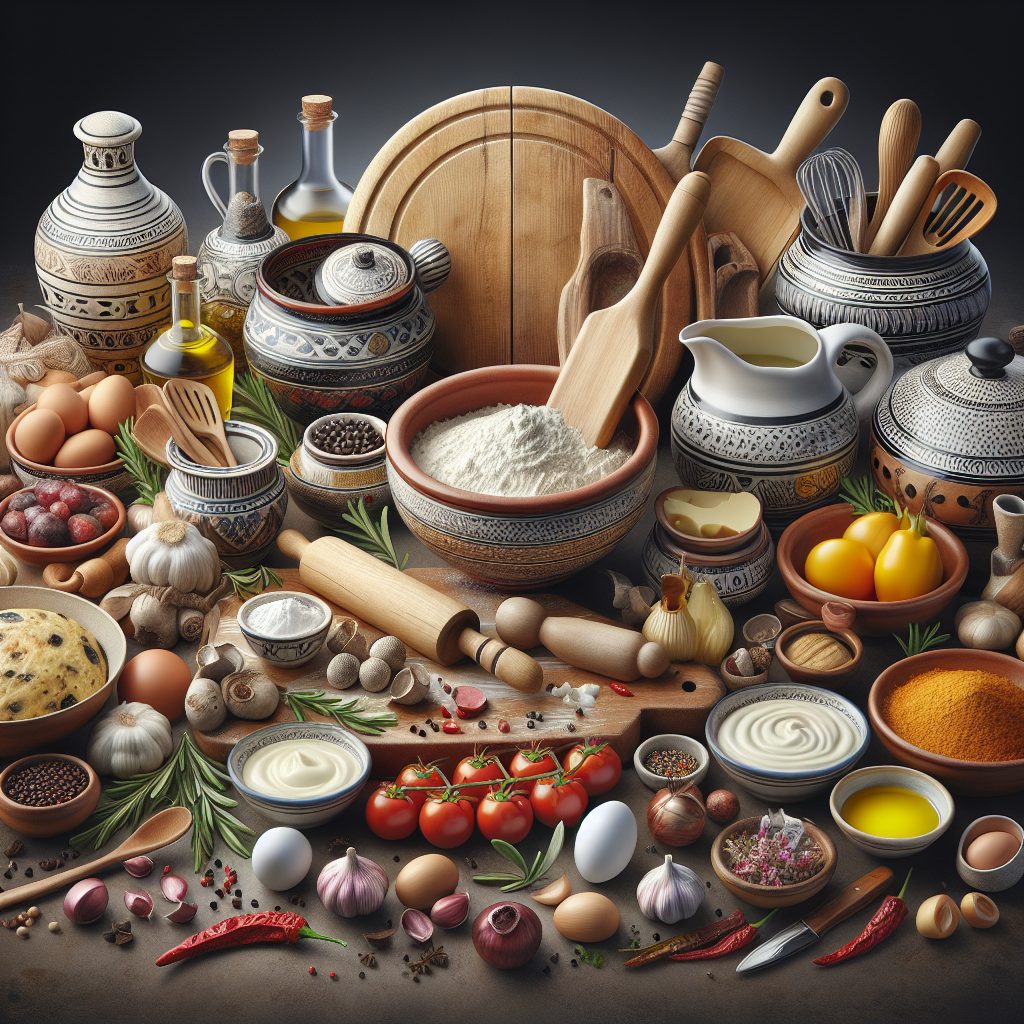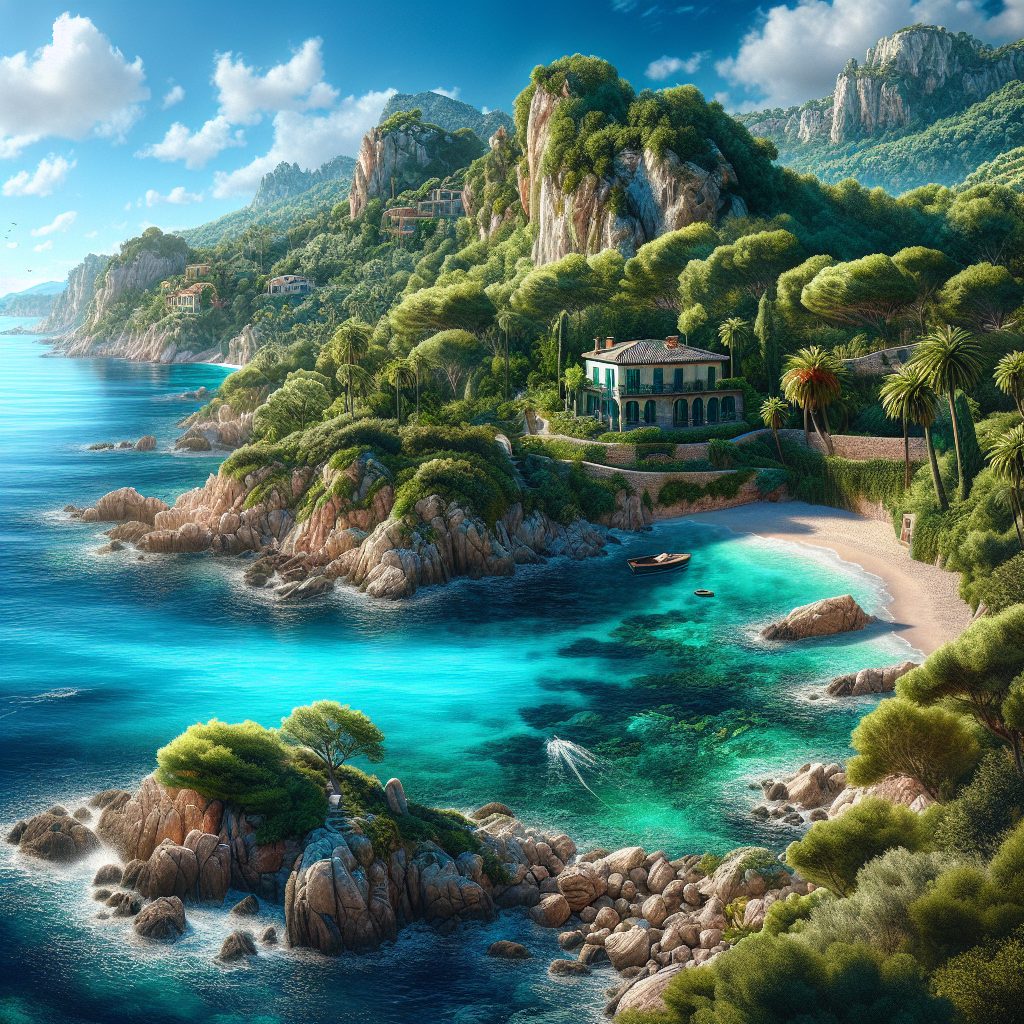Encapsulated by the emerald embrace of the Mediterranean, Sardinia and Sicily stand as two titans of tourism, each with their own distinct flavor and cultural heritage that beckon travelers from around the world. Sardinia, often heralded for its idyllic Costa Smeralda—aptly named the Emerald Coast for its crystalline waters—boasts a tapestry of ancient history and traditions, with the Nuragic civilization remnants standing as silent sentinels of an enigmatic past. Similarly, Sicily, the largest island in the Mediterranean, offers a gastronomic paradise, intertwining the richness of Arab, Norman, and Greek influences within its iconic cuisine and architectural prowess, not least demonstrated by the grandeur of the Valley of the Temples. Both islands lay claim to unique features that influence their respective appeals: Sardinia’s windswept, rugged landscapes offer sanctuary to the elusive mouflon, while Sicily’s smoldering Mount Etna creates both a formidable backdrop and fertile soils that nurture renowned vineyards.
As we delve deeper into the heart of what makes each island stand out, it’s essential to consider the nuanced tapestry of experiences that shape each visitor’s journey. One might explore the enigmatic Bronze Age towers of Sardinia, comparing them to Sicily’s storied halls of Palermo and the ancient theaters of Taormina. The pages ahead are filled with key takeaways on the allure of both destinations, from the untouched beaches of Sardinia’s secluded coves to the thrumming markets of Sicily’s vibrant towns. We aim to draw parallels and distinctions that will illuminate the charms and splendors of these jewels of the Mediterranean. So, keep turning the pages as we uncover the factors that might tilt the scale in favor of one island or the other in this friendly rivalry of mesmerizing beauty, rich history, and cultural depth.
Key Takeaways
1. Sardinia is renowned for its serene and pristine beaches, boasting a coastline characterized by clear, turquoise waters and fine, soft sand. The island offers a more private and tranquil beach experience compared to Sicily, which can be ideal for travelers seeking relaxation and escape from busy tourist spots.
2. Sicily, rich in historical and archeological sites, attracts those interested in exploring ancient history and diverse cultures. With its Greek theaters, Roman villas, and Baroque cities, Sicily provides a more extensive array of historical attractions than Sardinia, making it a preferred destination for history enthusiasts.
3. When it comes to cuisine, both islands have distinct specialties reflecting their unique cultural influences. Sardinia is famous for its seafood, pecorino cheese, and hearty pastoral dishes, while Sicilian cuisine is known for its Arab-influenced dishes such as couscous, a wide variety of pastries and sweets like Cannoli, and its celebrated street food culture.
4. The landscapes of Sardinia and Sicily differ significantly, with Sardinia being home to the rugged, mountainous terrain of the Gennargentu range and the lush, unspoiled countryside that is ideal for outdoor activities like hiking and cycling. On the other hand, Sicily features Mount Etna, Europe’s highest active volcano, which offers unique trekking experiences and fertile lands that contribute to its rich agriculture.
5. Sardinia’s smaller size and lower population density result in a more laid-back atmosphere compared to Sicily. The island is particularly favored by those looking for a peaceful retreat, as it provides a sense of seclusion and an escape from the crowds, a contrast to the bustling, vibrant energy found in many of Sicily’s larger cities and towns.
Which is the Superior Destination: Sardinia or Sicily?
Sardinia’s Pristine Beaches versus Sicilian Shores
The coastlines of both Sardinia and Sicily are breathtakingly beautiful, attracting sunseekers from around the globe. Sardinia is renowned for the Costa Smeralda, with its crystal-clear turquoise waters and fine-sand beaches that rival those of the Caribbean. On the other hand, Sicily boasts the famous Scala dei Turchi and the charming beaches of Cefalù, where the rich Mediterranean history is as prominent as the natural beauty. The choice between the beaches may come down to personal preference, whether one seeks the unspoiled, tranquil coves of Sardinia or the vibrant, culturally steeped sands of Sicily.
Exploring the Unique Cultures of Sardinia and Sicily
Sardinia and Sicily both have rich cultures that are distinctively different from mainland Italy and from each other. While Sardinia offers a unique blend of traditions with its mysterious Nuragic civilization, Sicily presents a tapestry of influences from Greek and Arab to Norman and Spanish heritage, reflected in its architecture, language, and customs. Visitors to Sardinia can experience the ancient Sardinian folklore and the island’s famous polyphonic singing, whereas Sicily provides a feast for culture lovers with its UNESCO World Heritage sites, such as the Valley of the Temples and the Baroque cities of the Val di Noto.
Gastronomic Delights: Sardinian vs Sicilian Cuisine
Food enthusiasts will find both Sardinia and Sicily a paradise of flavors. Sardinian cuisine is characterized by its pastoral traditions, with dishes like porceddu (spit-roasted suckling pig) and the distinctive pane carasau. Seafood also plays a significant role, with the island’s lobster being particularly renowned. Sicilian food, however, offers an even wider palette, thanks to its cross-cultural influences. Sicily is the birthplace of classics like arancini, cannoli, and the iconic caponata. Both islands feature a range of wines, with Sardinia’s crisp Vermentino and Sicily’s full-bodied Nero d’Avola representing their respective vinicultural highlights.
Accommodation and Accessibility
When it comes to accommodation and accessibility, both Sardinia and Sicily offer options from luxury resorts to more modest lodgings. However, Sardinia is often seen as the slightly more exclusive destination, with its popularity among the yachting elite and secluded luxury villas. Sicily tends to be easier to navigate for international travelers with its more extensive flight and ferry connections and its intermixed urban and resort areas, making it potentially more accessible for a wider audience.
Outdoor Activities and Natural Wonders
The rugged landscapes of both islands make them perfect for outdoor enthusiasts. Sardinia provides an impressive backdrop for hiking, especially within the Gennargentu mountain range and the Gorropu gorge, Europe’s deepest canyon. Sardinia’s coast is also a magnet for snorkelers and scuba divers. Sicily’s Mount Etna offers a rugged volcanic landscape for hiking and, in the winter months, even skiing. The natural reserves, such as the Zingaro Reserve in Sicily, offer spectacular opportunities for trekkers and nature lovers as well.
Which Island Offers Better Nightlife?
Nightlife on both islands is abundant, though style and intensity vary. Sardinia’s Porto Cervo and Costa Smeralda are hubs for high-end nightlife, with exclusive clubs and bars catering to an affluent crowd. Sicily’s nightlife is more diverse, with the bustling streets of Palermo offering everything from live music bars to traditional puppet theatres, and the seaside town of Taormina being famous for its vibrant atmosphere after dusk. For those seeking a livelier night scene, Sicily may have the edge with its variety and cultural depth.
Historical Significance and Archaeological Sites
History buffs will be torn between Sardinia’s Nuraghes—Bronze Age stone structures unique to the island—and Sicily’s remarkable array of historical sites. With Ancient Greek temples, Roman villas, and Norman cathedrals, Sicily serves as a historical treasure trove that illustrates the many layers of its complex past. Sardinia’s history is equally fascinating but less visible, with its prehistoric artifacts and less excavated ruins offering a more subtle yet equally compelling window into ancient civilizations.
Which Island Offers More Enchanting Experiences?
- Consider your personal interests: vibrant culture and history may draw you to Sicily, while unspoiled nature and quiet luxury might make Sardinia more appealing.
- Examine the types of beaches you prefer: both islands boast gorgeous coastlines, but Sardinia’s secluded coves contrast with Sicily’s more varied shores.
- Explore the culinary scene: foodies will delight in the distinct flavors and specialties unique to Sardinia and Sicily, from seaside delicacies to hearty interior dishes.
- Assess accessibility: factor in how easy it is to reach and get around each island, taking into consideration your travel preferences and requirements.
- Investigate accommodation options: determine whether you’re seeking a luxury resort, a cozy B&B, or an adventurous camping experience.
- Look into the islands’ outdoor activities: whether you’re a hiker, diver, or culture enthusiast, each island offers unique environments to explore.
- Enquire about nightlife and entertainment: your ideal vacation tempo might help decide between Sardinia’s sophisticated scene and Sicily’s lively cultural mix.
What is the main difference between Sardinia and Sicily?
While both are beautiful Mediterranean islands, Sardinia is known for its pristine beaches and wealthy resorts, while Sicily offers a rich tapestry of history, architecture, and a more diverse landscape, including Mount Etna, one of Europe’s most active volcanoes.
Which island has the better beaches, Sardinia or Sicily?
Many consider Sardinia to have some of the most beautiful beaches in the Mediterranean, with crystal-clear turquoise waters and fine white sand, making it a top destination for beach lovers.
Can you explore ancient historical sites in Sardinia and Sicily?
Yes, both islands have fascinating historical sites. Sardinia is famous for its nuraghi—Bronze Age stone ruins unique to the island. Sicily boasts impressive ancient Greek and Roman sites, including the Valley of the Temples and the well-preserved Roman mosaics at the Villa Romana del Casale.
Are there differences in the local cuisine between Sardinia and Sicily?
Definitely. Sardinian cuisine is known for its rustic and hearty dishes, including Porceddu (suckling pig) and seafood. Sicilian food is influenced by a multitude of cultures, and it’s known for dishes like Arancini (stuffed rice balls), Caponata (eggplant dish), and an array of seafood dishes, with desserts featuring ingredients like almonds and ricotta.
What are accommodation options like in Sardinia compared to Sicily?
Sardinia is often seen as more exclusive, with luxury resorts and private villas, although there are options at various price points. Sicily tends to have a broader range of accommodations, from budget-friendly inns to high-end hotels.
How do the cultural experiences differ between the two islands?
Sardinia has a very distinct culture, with its own language variant and unique traditions. Sicily, influenced by various civilizations over the centuries, has a rich cultural mosaic displayed through its architecture, language, and festivals.
Which island is better for outdoor activities?
Both islands offer a range of outdoor activities. Sardinia is great for sailing, windsurfing, and rock climbing, particularly in the mountainous interior. Sicily, with its varied terrain, offers excellent hiking, particularly around Mount Etna, as well as cycling and water sports.
Which island is more accessible for tourists?
Sicily is typically more accessible, with several airports receiving international flights and extensive ferry connections. Sardinia has airports too, but flight options might be less frequent, and it’s often more expensive to reach due to its status as a luxury destination.
What is the best time of year to visit Sardinia and Sicily?
The best time for both islands is from May to September when the weather is warm and conducive to beach activities. The peak summer months can be very crowded in both locations, so visiting in late spring or early fall might offer a more relaxed experience.
Which island offers a better nightlife?
Sicily generally has a more vibrant nightlife scene with its larger cities like Palermo and Catania offering a variety of bars and clubs. Conversely, Sardinia’s Porto Cervo and the Costa Smeralda area also have an exclusive nightlife scene but can be pricier.
Final Thoughts
Deciding whether Sardinia is better than Sicily depends on what you’re looking for in a vacation. If untouched beaches and luxury are your priority, Sardinia might be your ideal destination. On the other hand, if you’re interested in a rich cultural experience with a mix of history, architecture, vibrant markets, and diverse landscapes, Sicily could be more appealing. Ultimately, both islands offer unique experiences that cater to different preferences, making them both excellent travel choices in their own right.
It’s important to consider factors like the time of year, budget, desired activities, and personal travel style when making a decision. Regardless of which island you choose, both Sardinia and Sicily provide a rich taste of Mediterranean life, stunning natural beauty, and opportunities for unforgettable adventures. Rather than asking which is better, consider what aspects of island life you wish to delve into more deeply, and let that guide your choice.

